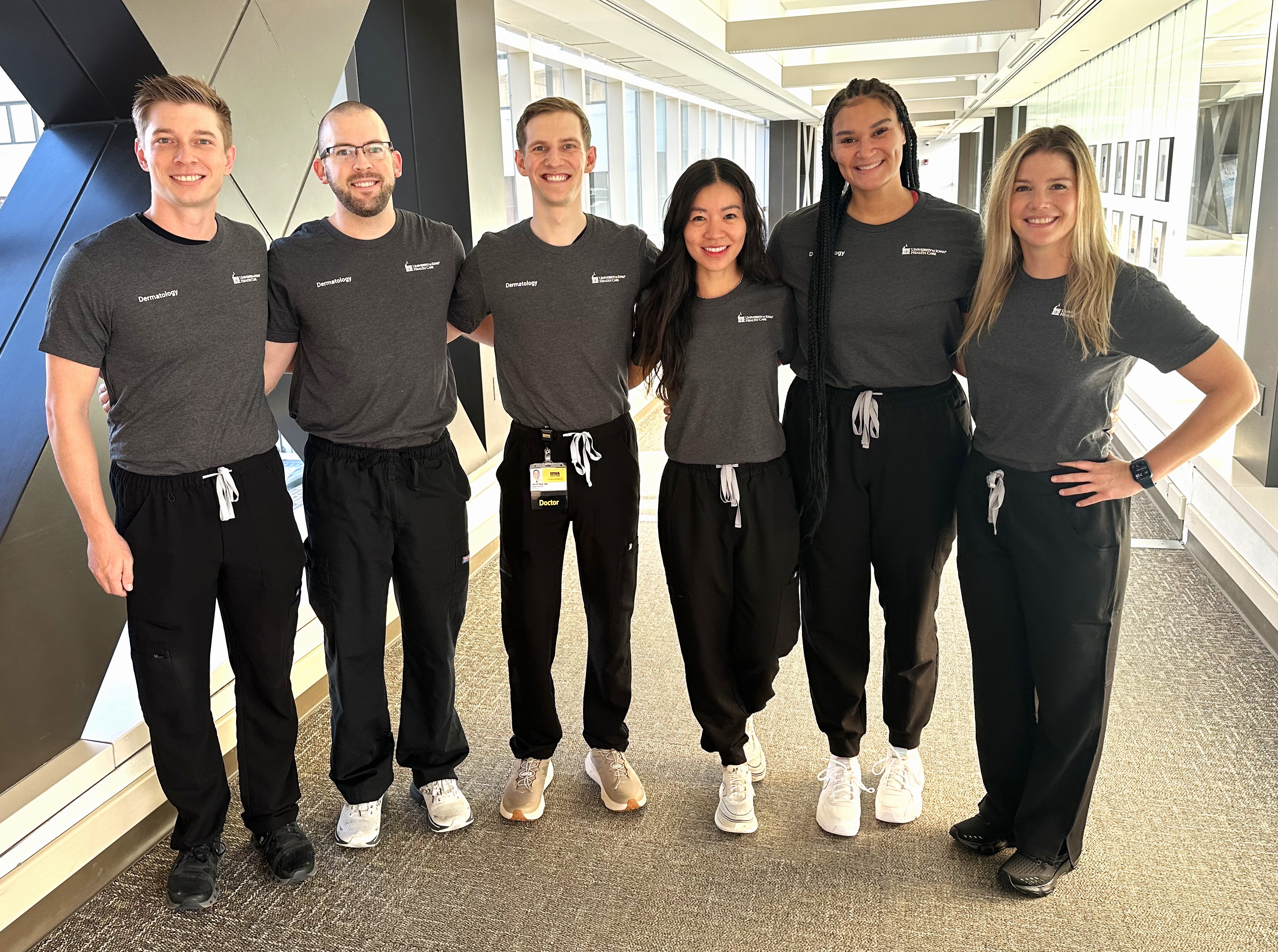Dermatology Residency
About the Program
The Dermatology Residency Training Program in the Department of Dermatology at The University of Iowa is a fully approved, three-year program which provides trainees with educational and practical experience that will enable them to deliver superior specialized skin care to patients.
Residents get comprehensive training in adult and pediatric dermatology and dermatologic surgery. The correlation of cutaneous pathophysiology and histologic findings with clinical disease and response to therapy is strongly emphasized in our clinical services. While the emphasis of training in this department is clinical, research (either clinical or laboratory) is encouraged and adequate time for such research studies will be made available on an individual basis.
There are currently 17 positions in the Dermatology Residency Training Program. All trainees are expected to complete the three-year program, but appointments are for one year with yearly reappointment. It is expected that all trainees will be eligible to sit for the examination of the American Board of Dermatology (ABD) upon completion of their residency.
The department is located in modern quarters including a clinic with 17 exam rooms, six Mohs surgery rooms, three laser surgery rooms and an ultraviolet therapy room. Facilities are immediately below the departmental offices of faculty and residents and in the attached Children's Hospital. The department also staffs outpatient clinics at the Iowa City Veterans Affairs Medical Center and Iowa River Landing. The Iowa City Veterans Affairs Medical Center is located immediately adjacent to University of Iowa Hospitals and Clinics and Iowa River Landing is 2 miles away. Our state-of-the-art departmental research laboratories, approximately 4,000 square feet, are within walking distance.
Approximately 30,000 patient visits are made yearly to the clinical service areas within the department. The residents carry a major responsibility for patient care, under faculty supervision. Patients are drawn from a large geographic area (all of Iowa, western Illinois, and northern Missouri), providing a wide spectrum of diseases. In addition to referrals from outside the University, a large number of referrals are seen from the University of Iowa Student Health Service and other specialty departments within University of Iowa Health Care.
Mission Statement
To promote the highest quality of health for patients with skin disease through creative teaching, systematic research, and the provision of empathetic, judicious, state-of-the-art medical care.
Accreditation
Accreditation of individuals trained in Dermatology is provided by the American Board of Dermatology (ABD). To be eligible for examination you must have satisfactorily completed 12 months of broad clinical training (PGY-1) and a formal residency training program in Dermatology of at least 36 months. For more detailed information visit the American Board of Dermatology’s website at www.abderm.org.
Welcome

Thank you for your interest in the Dermatology Residency Program offered by the Department of Dermatology at the University of Iowa Hospitals & Clinics.
Our three year ACGME-accredited program affords outstanding professional training for residents in the latest skills and knowledge of dermatology in order to provide patients with quality care.
The department takes pride in offering:
- The highest quality medical and surgical care for diseases of the skin, hair, and nails. These services are offered in modern facilities by recognized leaders in the field of dermatology
- World-class research conducted by department faculty on basic and clinical skin disease research to advance scientific knowledge, in order to provide better care for our patients
Quick Facts
By the Numbers
- 6 residents are accepted each year which will increase to 7 residents starting in 2025
- 17 total residents are ACGME approved for our training program which will increase to 21 total residents by 2027
- 14 faculty members train and mentor dermatology residents
Scheduling Rotations
Required Rotations
All rotations take place at University of Iowa Hospitals & Clinics.
Elective Rotations
A total of four weeks of elective time (including international) may be taken during the 2nd and 3rd year of residency training.
Benefits
- Competitive stipends
- Comprehensive medical, dental, hospitalization and pharmacy benefits for residents/fellows and their dependents
- 21 days of annual paid time off.
Board Certification Requirements
Visit the American Board of Dermatology for specifics on board certification requirements.
Department Overview
Education
First and foremost is its tradition of excellence in dermatology training that goes back many years. Iowa is a department with strengths in both medical and surgical dermatology and a faculty that is committed to passing on their knowledge to our trainees. The faculty is equally balanced with experienced, skilled senior members and energetic, creative junior faculty members. Additionally, both the Carver College of Medicine and University of Iowa Hospitals & Clinics are working together in advancing Dermatology. Both have recently invested in the infrastructure and new faculty opportunities for the Department.
The Department also maintains a close affiliation with the Veterans Hospital, which is located directly across the street from UI Hospitals & Clinics. The VA supports both clinical training opportunities and research within the Department of Dermatology. Finally, the University of Iowa also enjoys the strong on-going support of the program by its graduates and the community of dermatologists and patients in Iowa.
Clinical Services and Personnel
The Dermatology Clinics is a full-service outpatient surgical clinic containing 19 examination rooms, eight Mohs Surgery suites, two lasers surgery rooms, and an ultraviolet therapy room. The Department of Dermatology provides approximately 30,000 outpatient visits per year.
The department is also currently active in recruiting several new faculty members to assist in serving the ever-growing numbers of patients who seek our specialized dermatologic care.
Research
The department enjoys recently renovated laboratory space in the Marshall Dermatology Research Laboratories that supports both basic and clinical research. New programs sponsored by the NIH, VA, and industry will offer research opportunities that span clinical, translational, and basic science research on dermatological diseases and conditions.
Resident's Life
First Year Residency
First year residents spend twelve months in the general and pediatric outpatient clinics which are located in the University of Iowa Hospitals and clinics, Iowa City Veterans Affairs Medical Center and Iowa River Landing. By the end of the first year, we expect residents to be familiar with the clinical, pathological manifestations as well as treatment of the common congenital, inflammatory and neoplastic dermatologic diseases.
Residents should also be comfortable with punch and shave biopsies, liquid nitrogen cryotherapy, cyst excisions, simple excisions, UVB and PUVA photo therapy, and patch testing.
Second and Third Year Residency
In addition to time in outpatient clinics, there is a three-month assignment in cutaneous surgery, encompassing Mohs surgery and laser therapy. Three months are spent on the combined inpatient ward and consultation service and three months are also spent in dermatopathology. There are rotations at the Iowa City VA medical Center where the resident is responsible for managing dermatological patients, the outpatient clinic, as well as the inpatient consultations and surgeries. A one month elective may be individually arranged.
Residents have the opportunity to participate in seminars and classroom teaching. They also are encouraged to engage in one-on-one teaching of medical students and have opportunities to speak to paramedical groups. Additionally, the dermatology residents interact with residents or fellows from other services on clinical rotations in the department.
While the emphasis in the training of resident physicians in this department is clinical, research (either clinical or laboratory) is encouraged. Adequate time for such research studies will be made available on an individual basis. According to the American Board of Dermatology guidelines, all residents should participate in basic or clinical research during their residency. Residents will be expected to participate in at least one clinically-relevant research project during their three-year residency period (a case report and literature review suitable for publication would fulfill this requirement). It is expected that each resident will acquire sufficient knowledge and skill to become a diplomate of the American Board of Dermatology.
There are educational conferences for residents, including textbook conferences, journal club, didactic lectures, and weekly grand rounds. The curriculum is designed to cover both basic science and clinical aspects of medical dermatology, dermatologic surgery and dermatopathology. Over the past 15 years we have had a 98% pass rate on the American Board of Dermatology certification exam.
Clinical Units
The breadth of dermatologic disease can be broadly classified into primarily medical and surgical/ procedural dermatology. Some medical dermatology problems are rather straightforward in many patients with respect to diagnosis and treatment options. However, other medical dermatologic disease can have life-threatening complications of the disease or treatment required to manage the disease. The faculty that practice predominantly medical dermatology routinely see mild to moderately severe medical dermatologic disease with residents on a daily basis. In addition, these faculty also work with residents in diagnosing and managing very severe medical dermatologic disorders both in outpatient and inpatient settings.
Surgical/procedural dermatology can be subdivided into conventional and advanced surgical dermatology. Residents participate in removal of both benign and malignant lesions with excisional technique or other destructive modalities throughout their residency. Additionally, residents are instructed on advanced surgical dermatology (Mohs surgical technique).
Another more recently developed functional unit of dermatology is cosmetic dermatology. This discipline includes various types of laser therapy, injection of various filler materials, chemical peels, and use of Botulinum toxin for wrinkle effacement and hyperhidrosis. Dermatology residents work with the faculty in performing all of the above surgical and cosmetic techniques.
Medical Dermatology
A broad spectrum of dermatologic medical disease is seen at University of Iowa Hospitals & Clinics inpatient and outpatient services, University of Iowa Stead Family Children’s Hospital, the Iowa City Veterans Affairs Medical Center inpatient and outpatient services, and several outreach clinics of University of Iowa Health Care. These patients come from the local community as well as the State of Iowa and surrounding states, including western Illinois, eastern Nebraska and northern Missouri.
Many patients are referred by primary care and specialty physicians for further diagnosis and treatment of difficult problems related to skin disease. All patient care is delivered in conjunction with faculty.
Many of the department’s faculty have a primary clinical and research interest in life-threatening or potentially disabling skin diseases such as cutaneous lymphoma, severe psoriasis, allergic contact dermatitis-eczema, autoimmune blistering diseases (pemphigus, bullous pemphigoid, epidermolysis bullosa acquisita, linear IgA bullous dermatosis, dermatitis herpetiformis) and rheumatic skin disease (lupus erythematosus, dermatomyositis, scleroderma, vasculitis, etc.). A multidisciplinary Lymphoma Clinic has recently been established in the department and other subspecialty clinics are being developed. Long-term management of these disorders is provided by the residents teamed with specific faculty members. Patients with severe skin disorders may be admitted to the inpatient Dermatology Service at University of Iowa Hospitals & Clinics. At present, this is a relatively low-volume service. There is an active inpatient consultation service for patients admitted on other department services who have cutaneous disease. They are seen by dermatology residents and faculty working as a team. The collegial team concept is emphasized throughout the Dermatology residency and all other activities of the Department of Dermatology.
Surgical Dermatology
Surgical skills are honed throughout the residency, both at University of Iowa Hospitals & Clinics and the adjacent Veterans Affairs Medical Center. The dermatologic surgery unit is currently comprised of five full-time Mohs surgeons. The unit functions in an integrated role with the department. This provides an ideal setting for postgraduate education in medical and surgical dermatology. Residents are exposed to the principles of dermatologic surgery throughout their training and gain experience in the surgical management of skin disease. Throughout the three years of Dermatology training residents evaluate patients with surgical problems in the general dermatology clinic, present the relevant findings to the surgical staff, and participate in a surgical plan. The residents are assigned to the surgery service for a 2.5 month rotation in their second year, during which they are involved in the management of a full range of complex dermatological surgery cases. They prepare oral presentations for teaching conferences on surgical principles and present interesting cases, which illustrate these principles.
Faculty of the dermatologic surgery unit frequently collaborate with faculty from Head and Neck Surgery, Oculoplastic Surgery, Plastic and Reconstructive Surgery, and other surgical services. Residents have the opportunity to care for patients at the initial evaluation, throughout the operative procedures, and during the rehabilitative and repair phases. Residents also attend multi-specialty tumor conferences, which serve an important educational and management role for higher risk tumors.
The resident physician is frequently involved in the evaluation and management of a large number and variety of cutaneous tumors. The residents are exposed to other procedures including surgical repair and reconstruction, skin grafting, laser and nail surgery, and aesthetic techniques. Journal review is done on a regular basis with an emphasis on dermatologic surgery. Residents play an important role in teaching basic principles of skin surgery and cutaneous oncology to medical students.
Pediatric Dermatology
Residents are incorporated into the pediatric dermatology clinic from day one of residency. All residents will become very comfortable seeing a wide variety complex pediatric dermatologic issues, both medical and surgical. Pediatric dermatology training continues throughout the three years of dermatology residency at Iowa.
In our program, there is an emphasis on procedural pediatric dermatology in addition to complex medical dermatology. Residents will become comfortable performing procedures on pediatric patients both in the outpatient clinic setting as well as with the assistance of the anesthesia team in the operating suite. In addition, residents will commonly have interaction with other pediatric subspecialists including (but not limited to) rheumatology, genetics, ophthalmology, general surgery, otolaryngology, plastic surgery, gastroenterology, neurology, interventional radiology, neurosurgery, and anesthesia. Multidisciplinary clinics in which residents can participate include vascular anomalies clinic, tuberous sclerosis clinic, and genetics conference. Establishing and understanding the importance of interactions between pediatric subspecialists as well as primary care pediatricians and dermatology is an integral part of our practice at Iowa. In terms of inpatient training, residents will have the opportunity to participate in a robust pediatric dermatology inpatient consult service during the second and third years of residency.
Overall, residents will complete residency training with comfort in addressing a host of pediatric conditions in general dermatology and would be extremely well equipped for a subsequent fellowship in pediatric dermatology.
Dermatopathology
Residents receive continuous training in dermatopathology throughout the three-year residency. One or two conferences a week are devoted exclusively to dermatopathology. Didactic conferences, “unknown” conferences, and monthly “great cases” conferences are attended. During “unknown” conference, eight to ten glass slides are put out for review and independent study. The faculty dermatopathologist then discusses the cases with the residents, emphasizing diagnostic features and the histopathologic differential diagnosis. Also, in the weekly conference schedule, the histologic findings of patients presented are reviewed via a digital projection microscopy system. Slides from tumors scheduled for surgical procedures are reviewed with the dermatologic surgery faculty to best determine the most appropriate surgical procedure. Once each month, the dermatopathologist and the resident assigned to dermatopathology present “great cases” of the month. Slides are reviewed by projection microscopy.
During the second or third year of the residency, each resident spends a three-month block of time on dermatopathology. During this time they, along with a pathology resident, are responsible for looking at the slides and arriving at a preliminary diagnosis. The resident assigned to dermatopathology then meets with the dermatopathology faculty to formally read all of the slides and arrive at the final diagnosis.
In addition to formal teaching and pathology sign out, there is an extensive teaching set of instructive dermatopathology slides available for independent study.
Dermatologic Research Program
The research program in the Department of Dermatology at University of Iowa College of Medicine is currently expanding. In addition to MD faculty, currently two Ph.D. full-time faculty participate in basic science research. The 4,000 square feet of dedicated bench research space was completely renovated to produce a state-of-the-art facility. Currently immunobullous disease is a major focus of research.
How to Apply
All Applications for residency training, including reactivated applications from previous years, are accepted only through the Electronic Residency Application System (ERAS®).
The University of Iowa Dermatology Residency Selection Committee requests that the following documents be submitted through the ERAS® Application Form:
- Personal statement
- USMLE scores, Step 1 and (if available) Step 2
- ECFMG certificate, if applicable
- Dean's letter
- Transcript
- Up to 4 letters of recommendation
- Wallet-sized photograph
Applicants are urged to submit all documents to ERAS® as soon as possible in order for the credentials to be reviewed for the selection of applicants who will be invited to interview. The interview invite release date is November 18, 2024. The interview platform has not been officially determined and could be virtual via Zoom or in person . Candidates selected for interview will be notified by email.
Residency Eligibility Criteria
All applicants must have a preliminary year of postgraduate medical training (PGY-1). The first year must consist of clinical training in one of the following types of broad-based programs in the United States accredited by the Accreditation Council for Graduate Medical Education (ACGME) , or similar broad-based programs in Canada accredited by the Royal College of Physicians and Surgeons of Canada (RCPSC):
- A transitional year (formerly called flexible first postgraduate year)
- A first year residency in internal medicine, general surgery, family practice, obstetrics and gynecology, pediatrics, or emergency medicine.
Deadline
Applications for dermatology residency starting July 1, 2026 will be accepted until September 29, 2024.
The Interview
Invitations to interview
Invitations from our program will be extended via an email from our program coordinator on November 18, 2024.
What should you expect on the interview day?
The interview platform will be virtual via Zoom. You will interview with the majority of our faculty and you will have a chance to talk to some of our residents.
Our People
Our people are the heart of our program. From the reception desk to the exam room, from administration office to faculty office you will find our people eager to help you become the best dermatologist you can be.
At Iowa, you will be exposed to some of the best clinicians, researchers and teachers in our profession. We provide high-powered opportunities for you to learn career-long lessons from these dedicated professionals.
Contact Us
Residency Program Director
John Selby, MDResidency Program Director
Department of Dermatology
University of Iowa Hospitals and Clinics
200 Hawkins Drive 40024 PFP
Iowa City, IA 52242-1090
Phone: 319-356-1694
Fax: 319-356-0349
Email: john-selby@uiowa.edu
Residency Program Coordinator
Kate ScheerDermatology Residency Coordinator
Department of Dermatology
University of Iowa Hospitals and Clinics
200 Hawkins Drive 40024 PFP
Iowa City, IA 52242-1090
Phone: 319-356-1694
Fax: 319-356-0349
Email: Dermatology-ResidencyProgram@uiowa.edu
Department Chair
Ali Jabbari, MD, PhDChair & Department Executive Officer
Department of Dermatology
University of Iowa Hospitals and Clinics
200 Hawkins Drive 40024 PFP
Iowa City, IA 52242-1090
Phone: 319-356-3609
Fax: 319-356-0349
Email: ali-jabbari@uiowa.edu
Our Faculty

Kristen Berrebi, MD
Clinical Professor
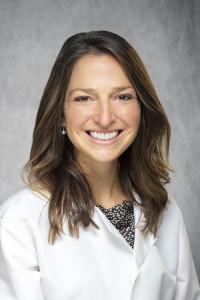
Elizabeth Cusick, MD
Clinical Assistant Professor
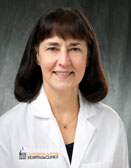
Paula Giudici, MD
Clinical Assistant Professor
Ali Jabbari, MD, PhD
Department Chair
Associate Professor

Vincent Liu, MD, FAAD
Clinical Associate Professor

Nicole Negbenebor, MD
Clinical Assistant Professor
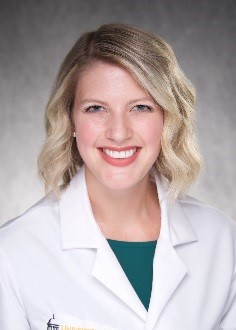
Ashley Patrick, MD
Clinical Assistant Professor

Jennifer Powers, MD
Clinical Associate Professor
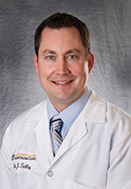
John Selby, MD, PhD
Clinical Associate Professor
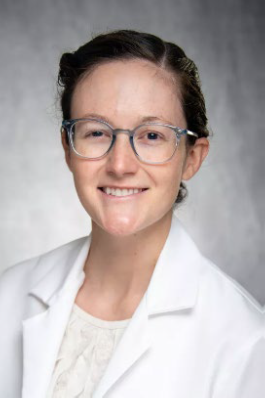
Alison Seline, MD, FAAD
Clinical Assistant Professor
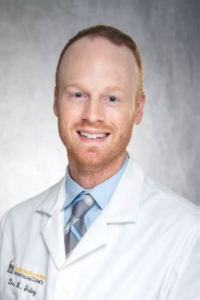
Kirk Sidey, MD, MBA
Clinical Assistant Professor

Mary Stone, MD, FAAD
Professor
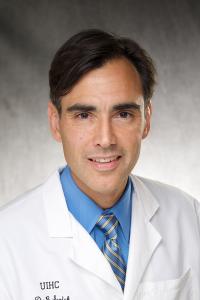
Brian Swick, MD, FAAD
Clinical Associate Professor
Marta Van Beek, MD, MPH, FAAD
Clinical Associate Professor
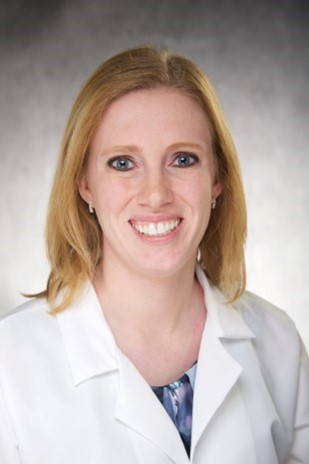
Melissa Willis, MD
Clinical Associate Professor
Bettendorf, IA Clinic
Welcome from the Chair and Department Executive Officer
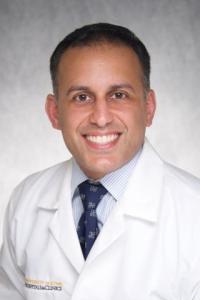 Thank you for your interest in the Residency Program in the Department of Dermatology at University of Iowa Health Care. We are deeply committed to training the next generation of dermatologists. The scope of training that our residents receive is comprehensive and includes immersive clinical experiences in medical dermatology, inpatient consultations, procedural dermatology/Mohs, pediatric dermatology, cosmetics and dermatopathology. Our graduates are exceedingly well-prepared to be successful in any chosen career path within medicine, thanks to the unique and special opportunities provided by our program.
Thank you for your interest in the Residency Program in the Department of Dermatology at University of Iowa Health Care. We are deeply committed to training the next generation of dermatologists. The scope of training that our residents receive is comprehensive and includes immersive clinical experiences in medical dermatology, inpatient consultations, procedural dermatology/Mohs, pediatric dermatology, cosmetics and dermatopathology. Our graduates are exceedingly well-prepared to be successful in any chosen career path within medicine, thanks to the unique and special opportunities provided by our program.
Our department is firmly devoted to excellence in dermatology education. Our faculty are outstanding role models for compassionate patient care who provide specialized expertise across a broad spectrum of dermatologic disease. Towards this end, our faculty provide supervision with graduated autonomy that nurtures competence and confidence in our residents while providing the best care to our patients.
Our Department has state-of-the-art facilities that are available for patient care, education, and research. At the main medical center of University of Iowa Health Care, Dermatology patients are seen in a spacious clinical setting on the third floor of the Pomerantz Family Pavilion (PFP). Immediately above this area is the administrative space, which includes offices for our faculty and administrative personnel as well as a recently renovated resident room with dedicated workstations/offices for each resident and fellow. Residents also rotate through the Iowa City VA Medical Center, located across the street from the main University of Iowa Health Care campus, where all of our senior residents serve as Chief Resident of the VA during their third year of training. Departmental research is conducted in dedicated spaces within the Marshall Laboratories for Dermatology Research, the University of Iowa Clinical Research Unit, and the clinical space in PFP.
Research opportunities in the department span clinical, translational, and basic science research on dermatological disorders. Our work is funded by a range of sponsors including the National Institutes of Health, the Department of Veterans Affairs, and the Department of Defense, among others. Based on individual interests, there are abundant opportunities for residents to become involved in research during their residency training. Moreover, there are specific programs sponsored by UIHC, including the Physician Scientist Training Program, that provide protected periods of time for research for residents pursuing an Investigative Training Track Pathway offered by the American Board of Dermatology.
I would be remiss if I did not mention the outstanding training our residents get in procedural dermatology, Mohs, and dermatopathology. The training our residents receive with our dermatologic surgeons is, I think, unparalleled among dermatology residency programs, as these rotations are focused and intensive. The same is true of the training our residents receive in dermatopathology; our residents operate in the same fashion as dermatopathology fellows at other institutions.
I would like to emphasize what truly sets our Residency Program apart: the sense of community and collaboration that thrives within our Department. Our residents and faculty share not just a commitment to excellence in dermatology but also a deep bond of camaraderie and mutual support. It's this unique atmosphere of collaboration and mentorship that truly defines the spirit of our program.
Thank you for considering the Residency Program in the Department of Dermatology at University of Iowa Health Care. We invite you to explore the many opportunities that our program has to offer and join us in shaping the future of dermatology. We look forward to welcoming the next generation of dermatologists to our department, where we're not just training doctors but nurturing leaders in the field. If you are seeking a dynamic, enriching, and collegial experience for your dermatology residency, we believe you will find your home here at the University of Iowa.
Current Residents
First Year Residents, Class of 2027
Zachary Skopec, MD
University of Iowa Carver College of Medicine
Jeffrey Dobrzynski, MD
University of Iowa Carver College of Medicine
Jared Blad, MD
University of Iowa Carver College of Medicine
Ailynna Chen, MD
University of Iowa Carver College of Medicine
Jazmin Newton, MD
University of South Dakota Sanford School of Medicine
Sarah Minion, MD
University of Iowa Carver College of Medicine
Second Year Residents, Class of 2026
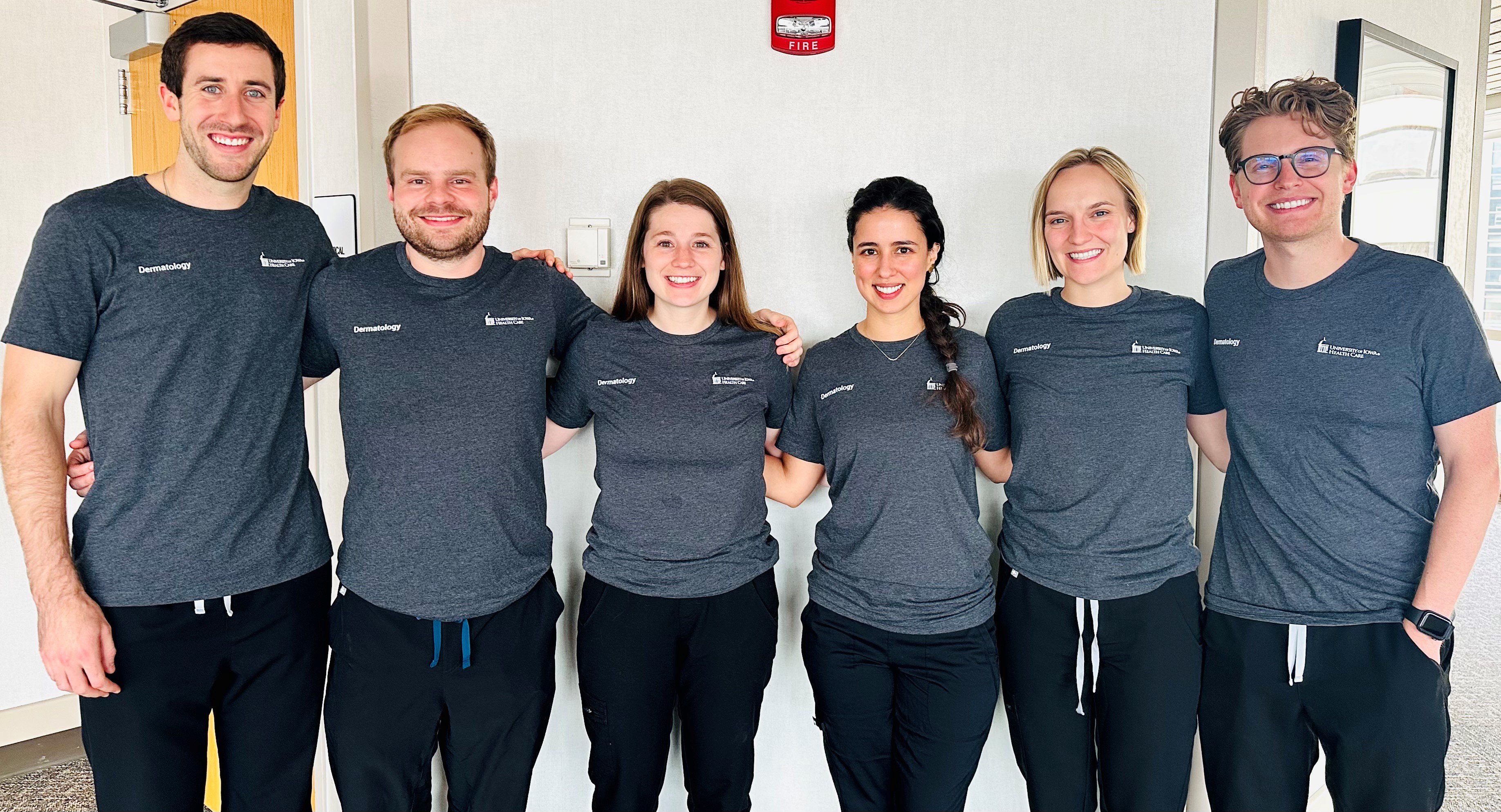
Collin O'Bryan, MD
University of Illinois College of Medicine
Samuel Palmer, MD
University of Iowa Carver College of Medicine
Halie Burdick, MD
University of South Dakota Sanford School of Medicine
Laura Correa Ferrer, MD
New York Medical College
Elizabeth Anderson, MD
Southern Illinois University School of Medicine
Rob Shaver, MD
University of Minnesota Medical School
Third Year Residents, Class of 2025
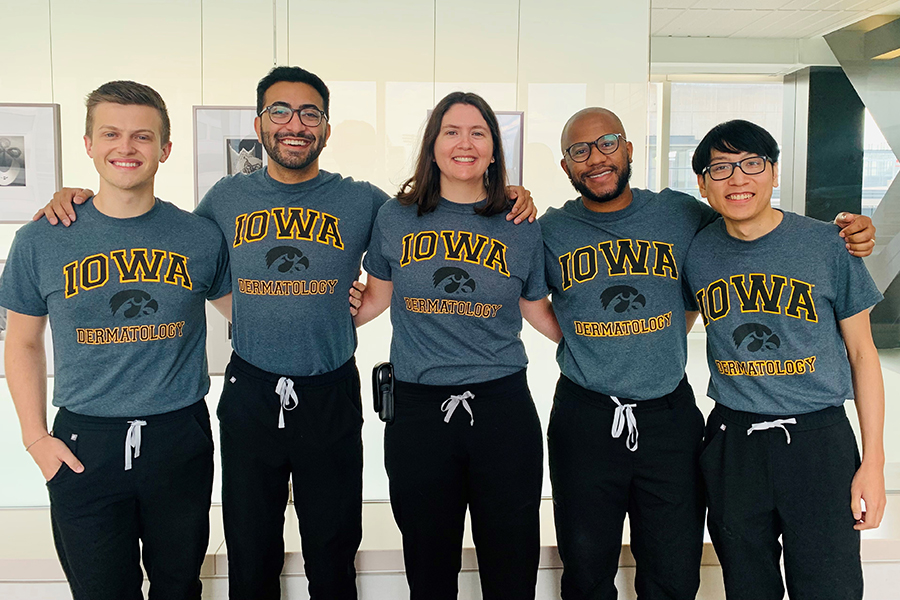
Andrew Poggemiller, MD
University of Iowa Carver College of Medicine
Roshan Abid, MD
University of Iowa Carver College of Medicine
Hannah Thompson, MD
University of Iowa Carver College of Medicine
Zak Sharif-Sidi, MD
Medical College of Wisconsin
Kevin Cheung, MD
University of Iowa Carver College of Medicine
Past Residents
2024 Graduates
- Jacquelyn Dang, MD- Kelsey-Seybold Clinic- Houston, Texas
- Mitchell Gibbons, MD- Blue Valley Dermatology- Parkville, Missouri
- Charles Katzman, MD- Northwestern Medicine- Chicago, Illinois
- Emma Killoran, MD- Faculty University of Iowa Dermatology- Iowa City, Iowa
- Blake Vest, MD- Fellowship in Dermatopathology- University of Texas Medical Branch- Galveston, Texas
2023 Graduates
- Matthew DaCunha, MD- Mohs Fellowship at the Skin Cancer Center- Cincinnati, Ohio
- Brady Evans, MD- Soderstrom Skin Institute- Bettendorf, Iowa
- Madeliene Stump, MD- Fellowship in Transplant Dermatology/Complex Cutaneous Oncology at Johns Hopkins University
- Kendra Tan, MD- Mohs Fellowship at the University of Missouri
- Emily Weig, MD- Grand River Medical Group- Dubuque, Iowa
2022 Graduates
- Sabrina Sisto Alessi Cesar, MD- Faculty at University of Iowa Dermatology- Iowa City, Iowa
- Christina Harview, MD- US Dermatology- Phoenix, Arizona
- Ashley McGuinness, MD- Micrographic Surgery and Dermatologic Oncology Fellowship at Mayo
- Ashley Patrick, MD- Faculty at University of Iowa Dermatology- Iowa City, Iowa
- Alexander Reid, MD- Micrographic Surgery and Dermatologic Oncology Fellowship at Geisinger
- Taylor Tabatabai, MD- TriHealth- Cincinnati, Ohio
2021 Graduates
- Anthony Berger, MD- Advanced Skin and Mohs Surgery Clinics- St. Joseph, Mich.
- Michael Ginnetti, MD- Associates in Dermatology- Bloomington, Ill.
- Lainee Goettsche, MD- Avera Medical Group Dermatology- Sioux Falls, S.D.
- Peyton Goodie, MD- Heritage Medical Associates- Nashville, Tenn.
- Christopher Robinson, MD- Northwestern Medicine Dermatology- Geneva Ill.
2020 Graduates
- Kirsten Dickinson, MD—Micrographic Surgery and Dermatologic Oncology fellowship at Cleveland Clinic
- Paul Fenton, MD—private practice in Cedar Rapids
- Jessica Harms, MD—faculty at University of Iowa Dermatology
- Vinesh Melvani, MD—private practice in Chicago
- Patricia Richey, MD—Micrographic Surgery and Dermatologic Oncology fellowship at University of Iowa Dermatology
2019 Graduates
- Adam Aronson, MD—Micrographic Surgery and Dermatologic Oncology fellowship in New Zealand
- Jina Chung, MD—Dermatopathology Fellowship at Thomas Jefferson University
- Marthe Dika, MD—Private practice in Wisconsin
- Melia Holt, MD—Private practice in Florida
- Uchenna Okereke, MD—Private practice in New York
2018 Graduates
- Josh Hammel, MD—Micrographic Surgery and Dermatologic Oncology Fellowship, University of Texas Medical Branch, Galveston, Texas
- Carole McClanahan, MD—Private practice, Colorado Springs, Colo.
- Allison Pierce, MD—Private practice, Johnson City, Tenn.
- Lulit Price, MD—Faculty, Geisinger Holy Spirit, Camp Hill, Pa.
- Gretchen Roth, MD—Faculty, Medical College of Wisconsin, Milwaukee
2017 Graduates
- Nicholas Bontumasi, MD—Private practice, Grand Rapids, Mich.
- Pooja Chitgopeker, MBChB—Micrographic Surgery and Dermatologic Oncology Fellowship, University of Iowa Hospitals and Clinics, Iowa City, Iowa
- Matthew Landherr, MD—Private practice, Cedar Rapids, Iowa
- Anthony Little, MD—Private practice, Washington, Pa.
- Tyler Quest, MD—Private practice, Casper, Wyo.
2016 Graduates
- Grant Ghahramani, MD—Private practice, Topeka, Kan.
- Ronda Farah, MD—Faculty, University of Minnesota, Minneapolis
- Krishna Mutgi, MD—Pediatric Dermatology Fellowship, Nationwide Children's Hospital, Columbus, Ohio
- Nahid Vidal, MD—Micrographic Surgery and Dermatology Oncology Fellowship, Mayo Clinic, Rochester, Minn.
- Melissa Willis, MD—Faculty, University of Iowa, Roy J. and Lucille A. Carver College of Medicine, Iowa City, Iowa
2015 Graduates
- Molly Moye, MD—Micrographic Surgery and Dermatologic Oncology Fellowship, University of Texas Southwestern, Dallas
- Megan Noe, MD, MPH—Master of Science in Clinical Epidemiology Fellowship, University of Pennsylvania, Philadelphia
- Amanda Tschetter, MD—Micrographic Surgery and Dermatologic Oncology Fellowship, University of Pittsburgh, Pittsburgh
- Elizabeth Vanderah, MD—Private practice, St. Louis
